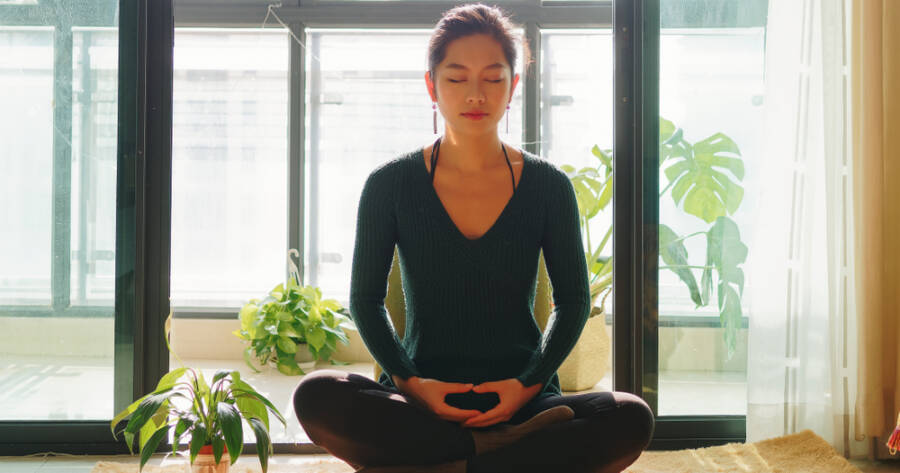Meditation is a powerful practice that can help reduce stress, improve focus, and promote overall well-being. However, the right cushion can make a significant difference in your comfort and ability to sit for extended periods. With so many options available, it can be challenging to pick an appropriate model. Explore some key factors to consider when choosing the right cushion for your practice.
The Importance of Proper Support During Meditation
Proper support during meditation is crucial for maintaining good posture and preventing discomfort or strain. Without the right cushion, sitting on the floor for long periods can lead to stiff hips, lower back pain, or poor circulation. A good meditation cushion helps you sit upright, aligns your spine, and supports your body’s natural curves.
The best cushions provide support in a way that encourages a relaxed but focused posture. They allow you to maintain a comfortable position without needing to shift constantly. Finding the right cushion for your body type and meditation style is essential for cultivating a more enjoyable and effective practice.
Types of Meditation Cushions and Their Benefits
Meditation cushions come in various shapes and materials, each offering different benefits depending on your preferences. The most common types include zafu cushions, bolster cushions, and seat cushions. Let’s look at each in more detail.
Zafu Cushions
The zafu is a traditional round cushion that provides firm support for your hips and legs. It helps elevate the pelvis, which encourages proper alignment of the spine. A widely recommended option is the Hugger Mugger Zafu Meditation Cushion, which is filled with buckwheat hulls for adjustability and comfort.
Zafu cushions are often paired with a zabuton, a square mat that provides extra cushioning for your knees, ankles, and feet. This combination is popular for seated meditation and works well for those who prefer sitting cross-legged.
Bolster Cushions
Bolster cushions are longer and offer more support for the whole body. They can be used for seated meditation, but they’re also excellent for restorative yoga and lying down practices.
Their shape allows them to support the lower back and neck, which can be beneficial if you need extra support for your spine. The Manduka Enlight Round Bolster is a top choice in this category, known for its soft microfiber cover and firm inner core that maintains shape over time.
Seat Cushions
These cushions are designed to provide comfort and relief for those who prefer sitting on a chair instead of the floor. They are smaller and often come in wedge or rounded shapes, offering firm support for your bottom and thighs to reduce pressure.
The Gaiam Meditation Chair Cushion is one example that fits well on standard chairs and helps users maintain upright posture during mindfulness sessions. These cushions are ideal for people who struggle to sit cross-legged or prefer sitting upright.
Key Features to Look for in a Meditation Cushion
When selecting a meditation cushion, there are several features to consider that will ensure it offers the best support for your needs. These include the cushion’s height, firmness, and material.
- Height: The height of the cushion can affect how your body aligns while meditating. A cushion that is too high may cause your knees to be elevated, leading to discomfort in the hips, while one that is too low can result in slumping. Choose a cushion that allows your knees to rest comfortably on the floor or mat while your pelvis remains slightly elevated.
- Firmness: The firmness of the cushion is another important factor. A cushion that is too soft might not provide enough support for your body, leading to poor posture. On the other hand, an overly firm cushion may feel uncomfortable during longer sessions. Look for a cushion that strikes the right balance between softness and support for your personal comfort.
- Material: The material of the cushion can influence its durability and feel. Many meditation cushions are filled with natural materials such as buckwheat hulls, cotton, or kapok. Buckwheat hulls are popular because they conform to the body while still providing firm support. Cotton and kapok are softer materials that offer a gentler cushion. The outer fabric should also be durable and breathable to ensure comfort during long meditation sessions.
How to Choose the Right Cushion for Your Body Type
Choosing the right cushion is partly about finding one that fits your body type. Different people have different needs based on their height, flexibility, and comfort preferences. Taller individuals might prefer a cushion with more height to ensure that their knees rest comfortably on the floor, while shorter individuals may need a lower cushion. People with less flexibility may benefit from a firmer cushion that encourages proper posture, while those with more flexibility might prefer a softer option.
It’s also important to consider your preferred meditation posture. If you meditate while sitting cross-legged, a zafu cushion with a zabuton mat may be the best option. If you prefer sitting in a kneeling or chair posture, a bolster or seat cushion might be more suitable.
Finding the Perfect Meditation Cushion for You
The right meditation cushion can significantly enhance your meditation practice by providing the support needed for a comfortable and focused experience. Whether you choose a zafu, bolster, or seat cushion, make sure to consider factors like height, firmness, and material to find the best fit for your body.

